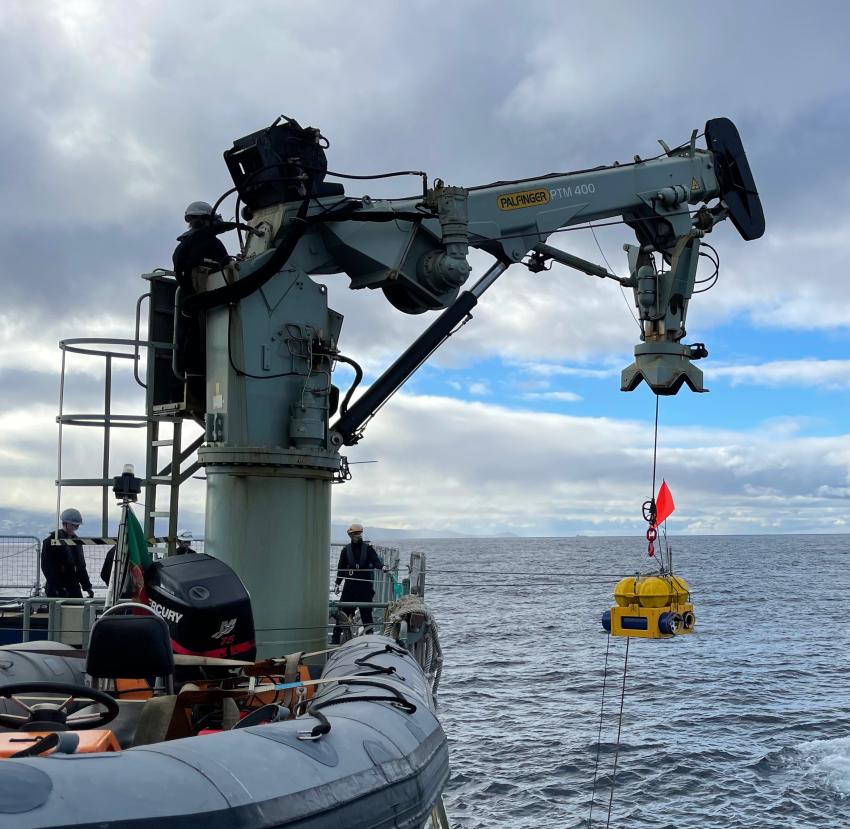Book a Fellow March In Person or Online SDM ticket
Book a Non-Fellows March In-person or Online SDM ticket
The oceans cover about 71% of the Earth's surface, yet our current picture of the structure and dynamics of the oceanic crust and mantle is mainly based on seismic data recorded in the continents or on noisy ocean islands.
Detailed seismic observations of the ocean and of sub-oceanic Earth’s interior require ocean bottom seismometers (OBS), but large OBS experiments - both in numbers of instruments and area covered - remain a major endeavour due to technical, logistical and financial challenges. A zoo of temporary OBS arrays and other passive ocean-bottom geophysics, OBG (e.g., magnetotelluric, geodesy) has been deployed in the last two decades. This led to fascinating new discoveries worldwide, from exciting earthquake phenomena (e.g., unexpected back-propagation of ruptures, slow slip events) to new constraints on subduction processes, mantle plumes, ridges, transform faults, thermal heterogeneity and volatile cycling. Despite great technological advances and improved data processing procedures, some challenges persist. For example, the sharing and application of best practices for OBG deployments, data preprocessing and formatting is still limited. Many processed data sets are not released for years (if at all), limiting the long-term impact and sustainability of data from these expensive, often publicly-funded projects. With recent large scale OBS arrays starting to change this picture by sharing data and practices (e.g., PacificArray, Rhum-Rum, UPFLOW) and with the expansion of OBS pools (e.g., UK’s OBIC, Canada’s NSFI), it is now timely to gather the marine geophysics community to discuss the state-of-the-art and ways forward.
In this meeting, we invite contributions from the global ocean-bottom geophysics community to share knowledge, experience, scientific achievements from OBG experiments and future directions. We welcome reflections on all aspects from early-stage planning, instrumentation development, experiment design, pre- and post-data processing and analysis (e.g., software, machine learning tools), to new scientific results (e.g., tomography, receiver functions, ambient noise studies, earthquake source analysis, active source imaging, etc). We encourage contributions in all relevant areas, such as from seafloor environmental sensors (e.g., using submarine fibre cables), magnetotellurics, geodesy, ocean acoustics, oceanography and marine biology. We also aim to discuss future large scale seafloor initiatives, notably in the Atlantic.
Invited speakers:
Prof. Karin Sigloch, GeoAzur (University of Nice), France
Prof. Donna Shillington, Northern Arizona University, USA
Abstract submission form, deadline 31 January 2025: https://forms.gle/dRebqhVNiTnt8RgQ6
10:00-10:30 Coffee
10:30-10:35 5 mns intro
10:35-11:00 Invited talk: Karin Sigloch (GeoAzur) - Scientific results of the RHUM-RUM passive marine seismology experiment to image a deep mantle plume under La Réunion
11-11h15 Takashi Tonegawa (JAMSTEC) - Seismic imaging with teleseismic waves and ambient noises captured by a submarine cable in the Nankai subduction zone with distributed acoustic sensing.
11h15-11h30 Petros Bogiatzis (Oxford) - The lithosphere-asthenosphere boundary (LAB) and modes of melting at a slow-spreading centre: Results from the PI-LAB experiment
11h30-11h45 Tom Garth (ISC) - Impact of OBS and MERMAID Observations on the Location Accuracy of Remote Oceanic Earthquakes
11h45-12h Lise Retailleau (IPGP) - Marine geophysical monitoring offshore Mayotte linked to the birth of a new seafloor volcano
12h-12h15 Maria Tsekhmistrenko (ERP & UCL) - Unveiling deep Earth mantle structures beneath the Azores-Madeira-Canaries with UPFLOW data
12h15-13h45 Lunch + posters (split into 2-3 slots)
13h45-14h10 Invited talk: Donna Shillington (NAU) - Recent successes and future directions for active-source ocean-bottom seismology: denser, deeper and 3
14h10-14h25 Tim Minshull (Southampton) - An integrated seismic, controlled source electromagnetic and magnetotelluric study of the continent-ocean transition southwest of the UK
14h25-14h40 Michele Paulatto (ICL) - Full waveform inversion of ocean bottom seismometer data, successes and failures
14h40-14h55 Danielle Harris (St Andrews) - Using Ocean Bottom Seismometers for estimating baleen whale densities and distributions
14h55-15h10 David Schlaphorst (Lisbon) - Using DAS Strain Data to Observe Temporal Variations in Oceanographic Parameters
15h10-15h25 Steve Jones (Birmingham) - Selling Ocean Bottom Geophysics experiments
15h25-15h40 Final remarks and discussion
15:40-16:00 Coffee
The downstairs room in nearby pub (King’s head) is booked until closure time from 4.30pm for those who can join.
Organisers:
Ana Ferreira (UCL)
Tim Henstock (Univ. Southampton)
Stephen Hicks (UCL)
Mike Kendall (Univ. Oxford)
Neil Mitchell (Univ. Manchester)
Christine Peirce (University of Durham)


